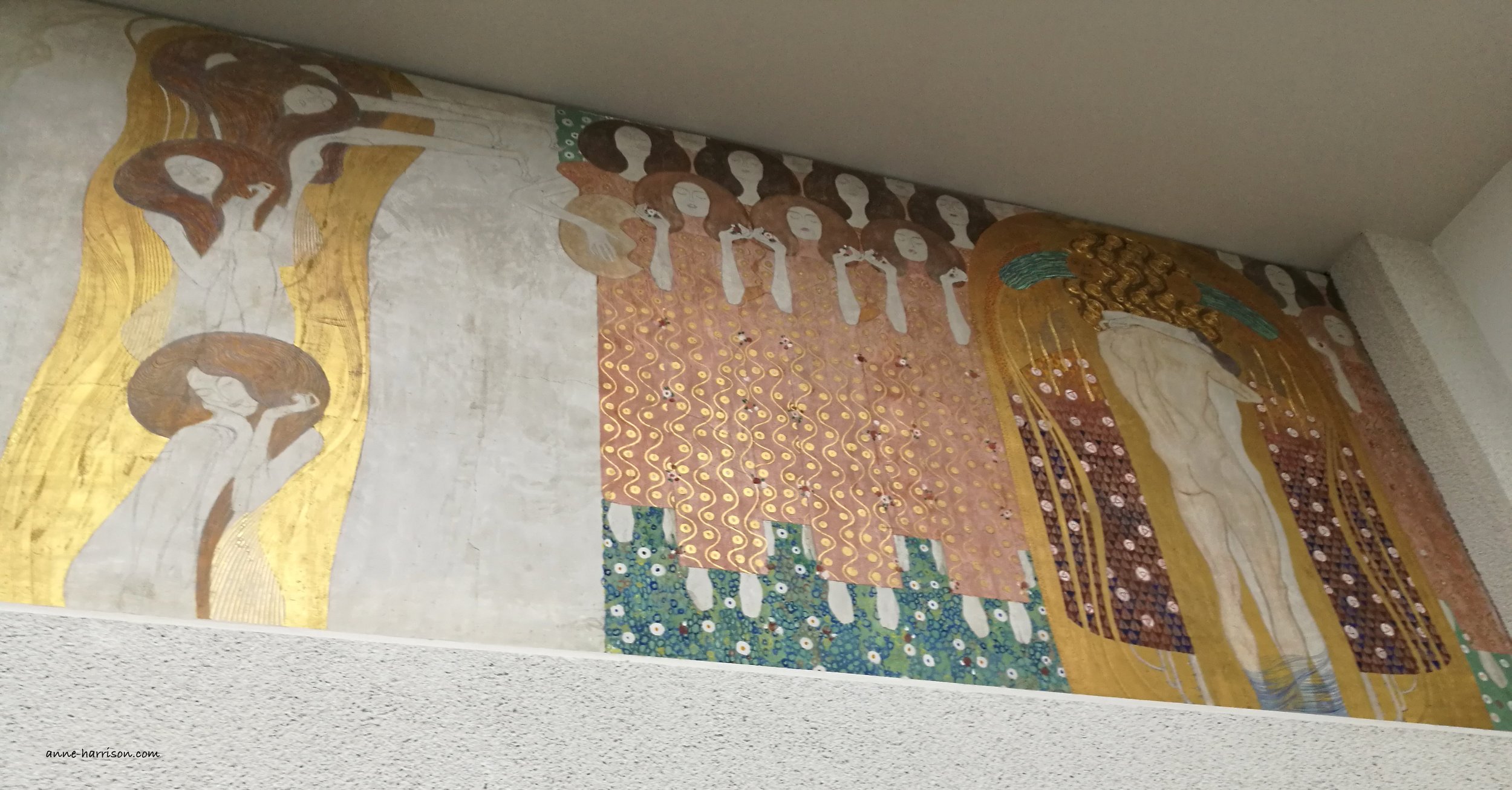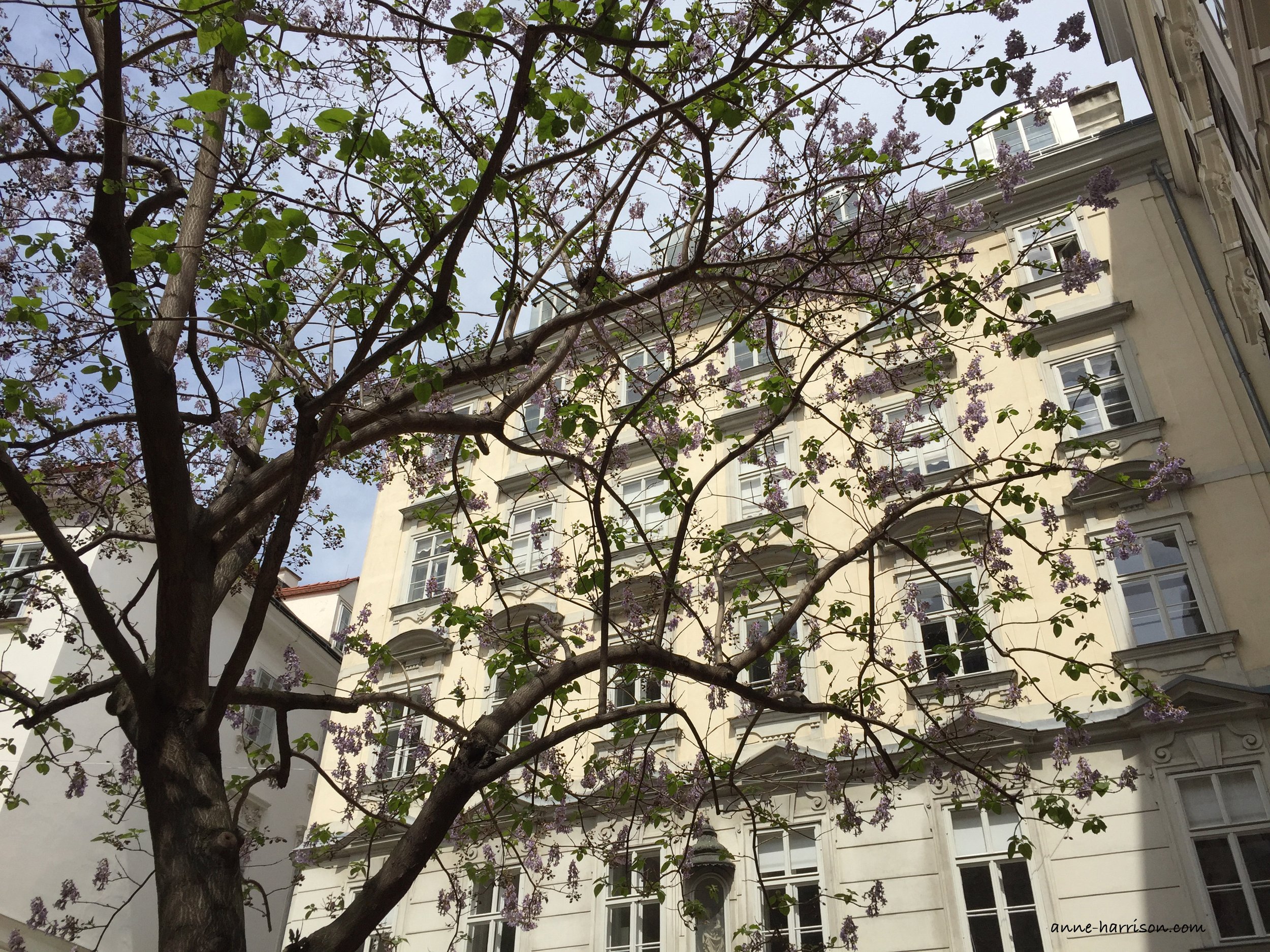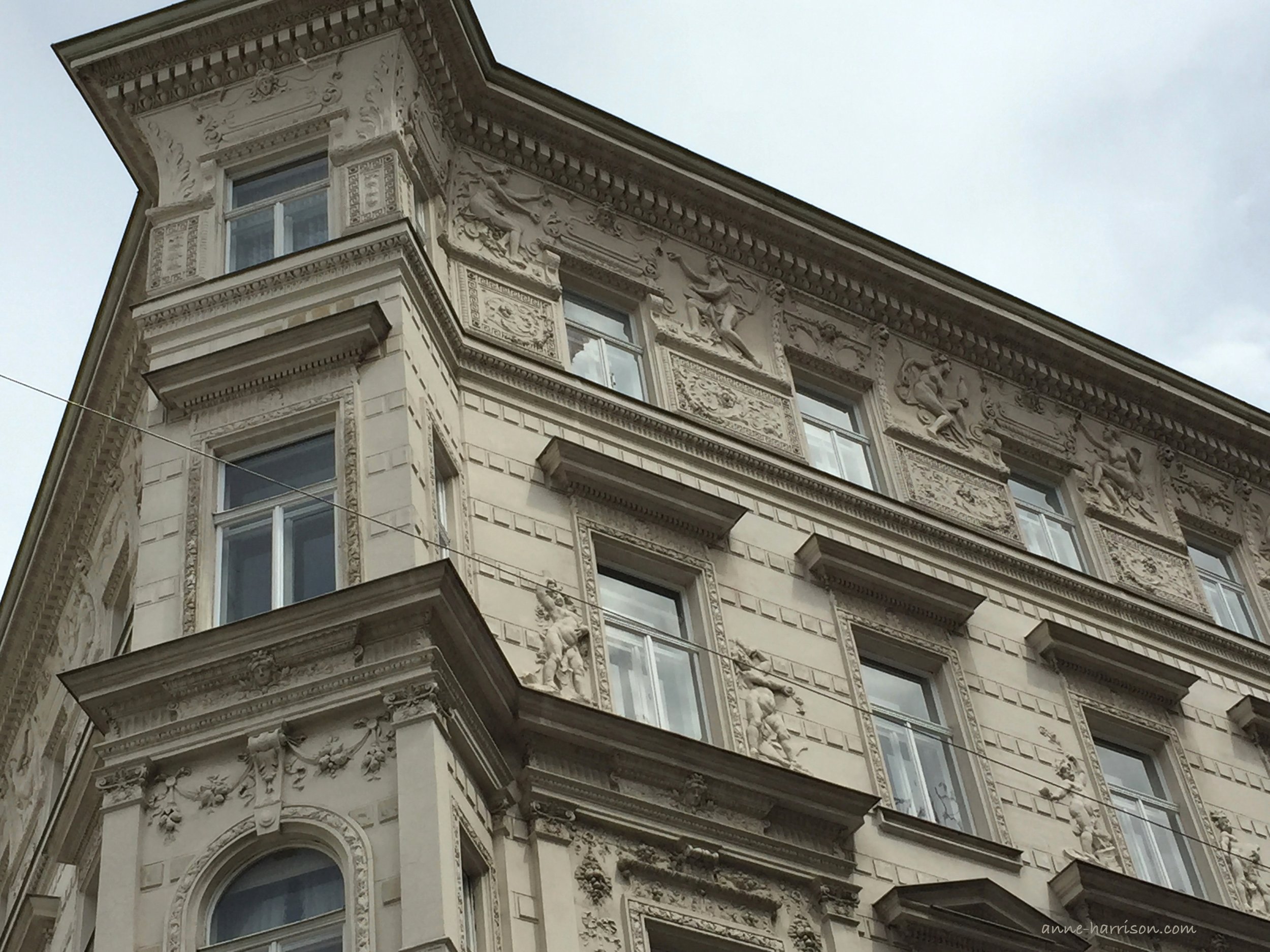Finding Klimt
A Klimt mural in a side street in Vienna © A. Harrison
As is (unfortunately) my wont when travelling, I found myself totally lost in Vienna. Although much of the old city is a UNESCO World Heritage Site, many of the streets simply didn't exist on my map. Soon the cathedral and neighbouring alleyways were a memory, so I hailed a cab and went to the Belvedere Museum.
Even today Vienna presents a perfect facade to the world. The windows of adjoining houses align, reflecting the city's perfect architecture. Not for the Austrians the chaos of Venice or Florence. Vienna is a city in many ways entrapped in its past, from the still palpable influence of Empress Maria Theresa, the once grandeur of the Austro-Hungarian Empire, to the predominance of Mozart wherever you go. Even the taxis play his music (except one, which was playing jazz. I felt incredibly radical just listening to it).
Perfectly aligned windows © A. Harrison
The Belvedere Museum has the world’s largest collection of art works by Klimt, including The Kiss and Judith. Gustav Klimt was a major figure in the Vienna Secession Movement. Essentially a variant of the of the 19th C Art Nouveau Movement, it marked the beginning of modern art in Austria. To the Viennese of the time, Klimt proved radically modern.
Despite the eroticism of his works, I found the women in Klimt's paintings to have an innocent, almost ethereal quality. After visiting Venice, I had a better understanding of his work, with its flowing colours and the predominance of gold (his father was, after all, a goldsmith). In Venice such style abounds, beginning with the Byzantine mosaics which adorn the likes of St Mark’s Cathedral. Even when breaking with tradition, all forms of art have roots in the past.
A sign in the old town © A. Harrison
The Belvedere was acquired, naturally, by Empress Marie Theresa in 1752. It seems only fitting - the woman seems to have placed a controlling finger everywhere in her empire. The building saw the marriage of one of her daughters, Maria Antoinette, to the future Louis XVI in 1770; 6 years later the Imperial Picture Gallery was established and opened to the public in 1781, becoming one of the world’s first public museums.
Although the emphasis is on Austrian art, within the museum are also works by Monet and van Gogh. There is also an exquisite collection of medieval art. Intriguingly, many of the female statues have the same flow and incline of their neck as the women in the works of Klimt. A word of warning if visiting: I found it confusing finding the right gallery. Use the entrance for the Upper Belvedere, for the Lower Belvedere and Orangery are used for temporary exhibitions. (The gardens between the Upper and Lower Belvedere are quite extensive.)
The gardens between the Upper and Lower Belvedere © A. Harrison





